Historic Villages in the UK That Time Forgot
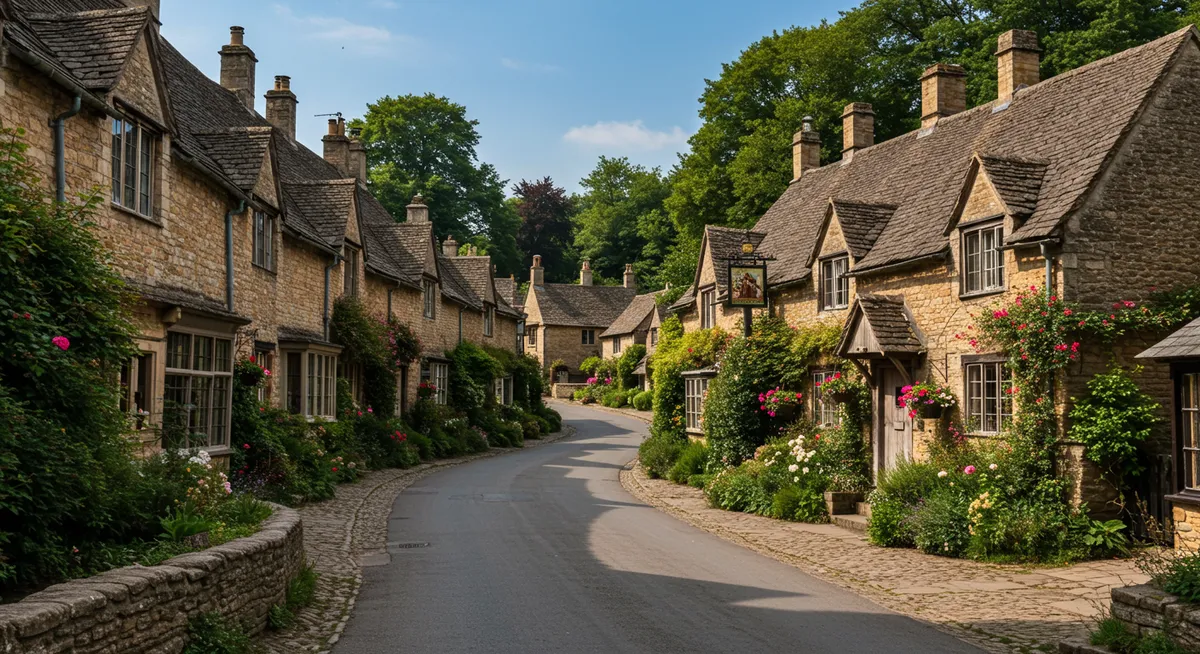
Historic Villages in the UK That Time Forgot
Scattered across the hills, valleys, and coastlines of the United Kingdom are remarkable villages that seem to exist in a different era. These enchanting settlements have remained largely unchanged for centuries, preserving their historic architecture, traditional layouts, and distinct character despite the pressures of modernization. From the honey-colored stone cottages of the Cotswolds to the half-timbered houses of medieval market towns, these living museums offer visitors authentic connections to Britain's rich past. This guide explores the UK's most extraordinary historic villages where time appears to have stood still.

1. Castle Combe: The Quintessential English Village
Nestled in a wooded valley within Wiltshire's Cotswolds, Castle Combe is frequently cited as England's most beautiful village—and with good reason. This extraordinary settlement presents an almost perfectly preserved medieval townscape, with honey-colored Cotswold stone cottages lining its main street, a 13th-century church housing a faceless medieval clock, and a picturesque bridge crossing the Bybrook River. Remarkably free of modern intrusions, Castle Combe offers visitors an authentic journey into England's rural past.
What Makes It Special
- Architectural Integrity: Contains no visible modern buildings or alterations within the village center
- Medieval Market Cross: The 14th-century market cross remains the focal point of the village center
- St. Andrew's Church: The medieval parish church houses one of the oldest working clocks in England
- Textile Heritage: Once a center of the Cotswold wool industry, with the former weavers' cottages still standing
Historic Significance
Castle Combe's history dates back to Roman times, but the village as seen today largely developed during the medieval period when it flourished as a center of the Cotswold wool industry. The "castle" that gave the village its name was a Norman fortress that stood on the hill above the current settlement, though little remains today. The village's golden age came in the 15th century when local wool merchant John Fastolf (who may have inspired Shakespeare's Falstaff) brought significant prosperity to the area. Economic decline after the medieval period ironically preserved Castle Combe's historic character, as there was little wealth for modernization.
What to Experience
Stroll the picture-perfect main street with its unbroken rows of listed buildings, many dating from the 15th century. Visit St. Andrew's Church to see the medieval faceless clock and monuments to the village's prosperous wool merchants. Photograph the iconic view from the bridge over the Bybrook, with cottages rising up the hill behind. Look for the remnants of the village's wool industry, including the former weavers' cottages with their wider windows designed to maximize natural light for cloth production.

2. Lacock: The Complete Historic Village
Owned almost in its entirety by the National Trust, the village of Lacock in Wiltshire offers one of the most comprehensive historic experiences in Britain. This remarkably cohesive settlement features buildings spanning from the 13th to the 18th centuries, creating a perfectly preserved architectural timeline of English vernacular styles. Together with the magnificent Lacock Abbey (birthplace of modern photography), the village presents an extraordinary glimpse into rural English life across multiple centuries.
What Makes It Special
- National Trust Protection: The entire village has been owned and preserved by the National Trust since 1944
- Architectural Range: Contains excellent examples of buildings from medieval, Tudor, Georgian, and Victorian periods
- Lacock Abbey: The adjacent former nunnery includes the birthplace of photography, where William Henry Fox Talbot created the first photographic negative
- Film Location: Used extensively in film and television, appearing in Pride and Prejudice, Downton Abbey, and several Harry Potter films
Historic Significance
Lacock's history centers around its abbey, founded in 1232 by Ela, Countess of Salisbury. The village developed to support the abbey, prospering through the wool trade in the medieval period. Following the Dissolution of the Monasteries, the abbey became a private residence but continued to influence the village's development. Lacock's most significant connection to modern history came in the 1830s when William Henry Fox Talbot, then owner of the abbey, conducted experiments that led to the invention of the negative-positive photographic process. The village was gifted to the National Trust in 1944, ensuring its preservation as a complete historic entity.
What to Experience
Explore the four main streets of the village, each lined with buildings of different periods, from medieval timber-framed structures to 18th-century stone houses. Visit Lacock Abbey to see the medieval cloisters, the Tudor rooms, and the Fox Talbot Museum dedicated to the birth of photography. Step into the 14th-century tithe barn, St. Cyriac's Church, and the village's historic pubs with their centuries-old interiors. Look for familiar scenes from films and television shows that have used Lacock's unspoiled streets as the perfect historic backdrop.
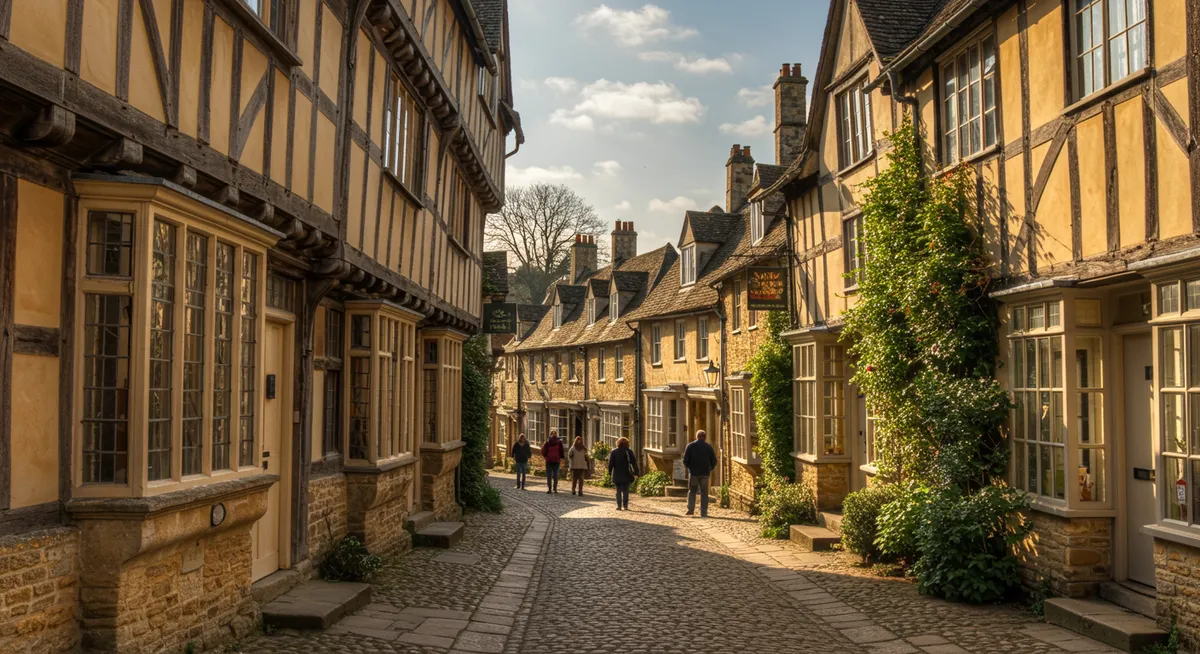
3. Rye: Medieval Gem of East Sussex
Perched on a hill overlooking the English Channel in East Sussex, the ancient town of Rye combines medieval street patterns with perfectly preserved historic buildings to create one of southeast England's most atmospheric destinations. Once surrounded by sea, this former Cinque Port and smuggling haven retains much of its maritime character despite now being two miles inland. Cobbled lanes like the famous Mermaid Street, lined with timber-framed houses and Georgian facades, create an extraordinary sense of stepping back in time.
What Makes It Special
- Medieval Street Plan: Maintains its narrow, winding streets and passages largely unchanged since the Middle Ages
- Mermaid Street: One of England's most photographed streets, with the historic Mermaid Inn once frequented by notorious smugglers
- Maritime Heritage: Former important port with several historic buildings related to its seafaring and defensive past
- Literary Connections: Home to writers like Henry James and E.F. Benson, whose fictional Tilling was based on Rye
Historic Significance
Rye's history is inextricably linked to the sea and England's maritime defense. As one of the Cinque Ports, it was granted special privileges in return for providing ships and men for the crown. The town's strategic importance led to the construction of defensive structures like Ypres Tower in the 13th century. Rye's position near the French coast also made it vulnerable to attacks, most notably a devastating French raid in 1377 that destroyed much of the town. In the 18th century, Rye became notorious as a center for smuggling operations, with the infamous Hawkhurst Gang using the Mermaid Inn as their headquarters.
What to Experience
Wander the cobbled Mermaid Street with its tilting half-timbered houses and historic Mermaid Inn dating to 1420. Climb the tower of St. Mary's Church for panoramic views across Rye's red-tiled rooftops to the reclaimed marshlands beyond. Visit Ypres Tower, now housing a museum detailing the town's defensive and smuggling history. Explore Lamb House, once home to Henry James and later E.F. Benson, preserving the literary heritage of the town. Walk the former town walls and visit the reconstructed town gate to understand Rye's defensive past.
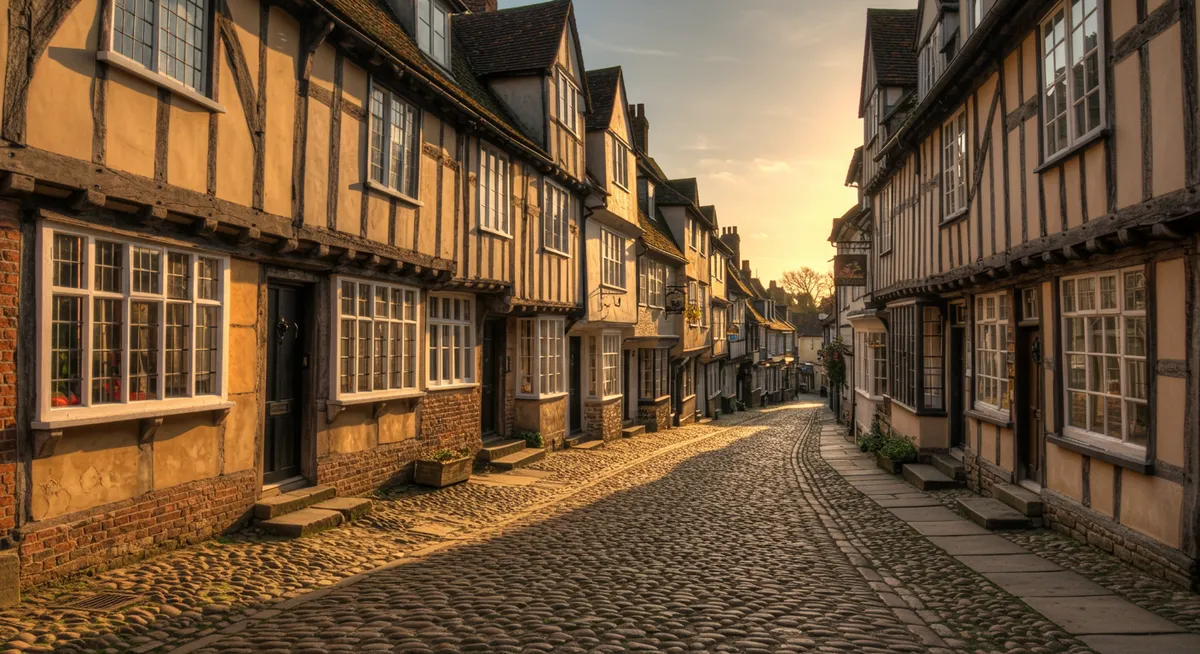
4. Clovelly: Private Village Frozen in Time
Clinging dramatically to a steep hillside above the Bristol Channel in North Devon, Clovelly presents one of Britain's most unusual and perfectly preserved historic villages. Privately owned by the same family since the 13th century, this extraordinary settlement features a steep cobbled street descending 400 feet to a tiny working harbor. With no vehicle access, traditional sledges pulled by donkeys or people remain the primary method of transporting goods up and down the village street, maintaining centuries-old practices in a modern world.
What Makes It Special
- Private Ownership: Has been privately owned by just three families since the 13th century, ensuring consistent preservation
- Car-Free Environment: No vehicles can navigate the steep main street, preserving traditional transport methods and atmosphere
- Working Harbor: Maintains a small but active fishing fleet using traditional methods
- Architectural Cohesion: Features white-washed cottages with slate roofs and flower-bedecked facades in a harmonious ensemble
Historic Significance
Clovelly has been inhabited since Saxon times, but its development into the village seen today began in the 13th century when it came into the possession of the Giffard family. The village's economy traditionally centered around fishing, particularly herring, with the steep main street developing organically to connect the harbor to the fertile land above. In 1738, the estate passed to the Hamlyn family, who still own it today. Their consistent management has maintained Clovelly's historic character and traditional practices, while adapting to create a sustainable tourism model that supports ongoing preservation.
Exploring the UK's Historic Villages
The United Kingdom offers a remarkable diversity of historic villages, each with its own distinctive character and heritage. Consider these themed routes to explore these remarkable places:
- Cotswolds Heritage Trail: Begin at Castle Combe and explore other honey-colored stone villages throughout this designated Area of Outstanding Natural Beauty
- Film Location Journey: Visit Lacock and other villages that have served as backdrops for period films and television series
- Historic Harbors Route: Explore Rye and other coastal villages that showcase Britain's maritime heritage
- Time Capsule Experience: Discover Clovelly and other villages with exceptional preservation thanks to private ownership or protective trusts
Travel Tip: Many of these historic villages are extremely popular during summer months and on weekends. For a more authentic experience, consider visiting mid-week or during the shoulder seasons (April-May or September-October) when the weather is still pleasant but crowds are significantly reduced.
Related Content
If you're fascinated by the UK's historic villages, you might also enjoy these related articles:
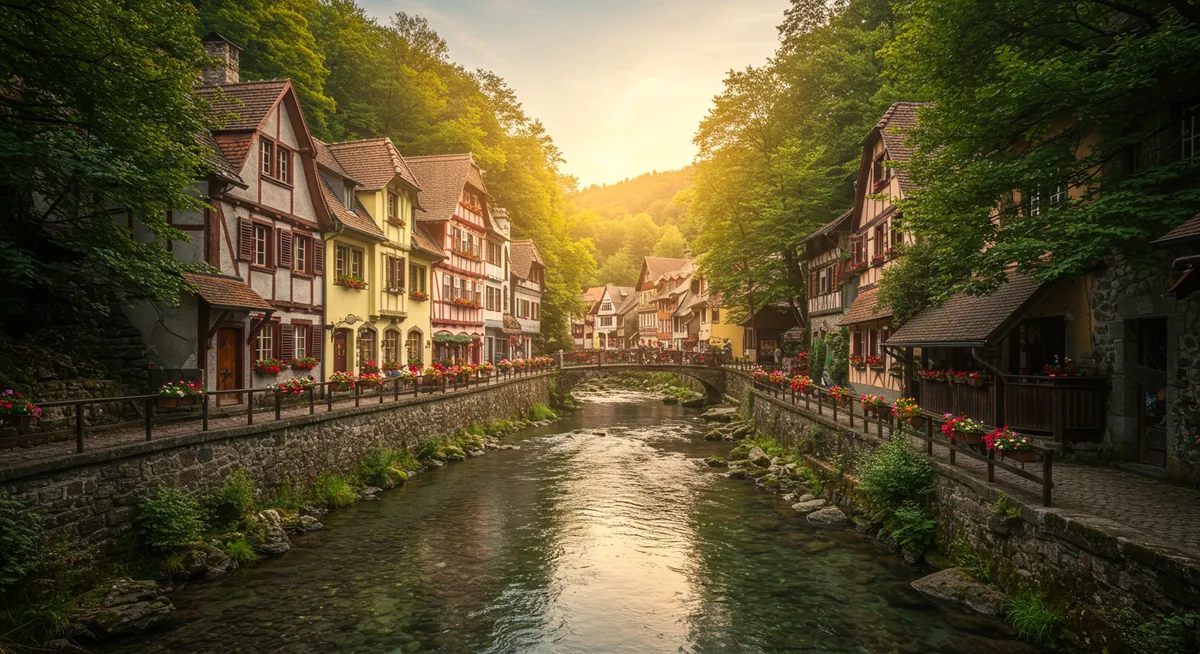
Hidden Gem Towns Around the World
Explore charming, off-the-beaten-path towns and villages across the globe that offer authentic travel experiences away from tourist crowds.

10 Best Preserved Medieval Villages in France
Discover France's most breathtaking medieval villages, from the perfectly preserved streets of Pérouges to the dramatic cliff-top settlements of Rocamadour.
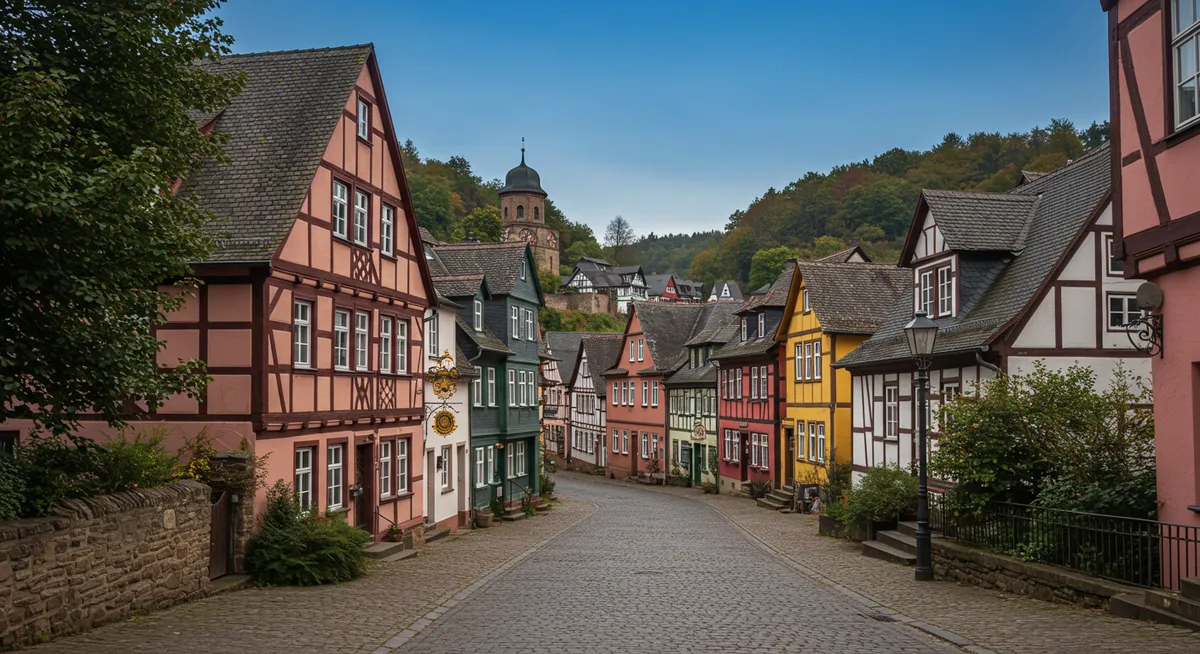
Germany's Oldest Villages and Timber-Framed Towns
Explore Germany's most perfectly preserved historic villages, from the medieval splendor of Rothenburg ob der Tauber to the timber-framed wonders of Freudenberg.
Explore More Historic & Hidden Gem Villages
Discover more extraordinary villages across Europe and beyond.